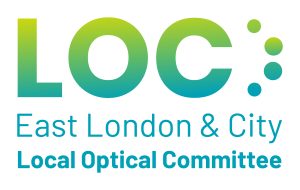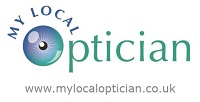LOW VISION
If you have low vision you will find it hard to see things clearly even with your up-to date glasses or contact lenses.
Although in many cases nothing can be done to improve the medical condition of your eyes, the majority of people with low vision have enough sight to be useful in their daily lives.
To make things easier to see, and make the best use of your sight make them bigger, bolder and brighter.
Making things bigger
If you make things bigger it usually makes them easier to see. Readily available products include big-button telephones and clocks and watches with large numbers. You can write notes using thick black felt tip pens and read large print books.
As well as using products, you can also try moving things closer to your eyes. This will not damage your eyes – it will make things appear bigger. For example, you could sit closer to your television to make the picture bigger.
Using a magnifier can also make things look bigger and we give some information and advice below.
Making things brighter
Using better lighting can help to make things easier to see. You should make sure that you have as much light as you feel comfortable with for each task that you do.
It is often easier to see things if you shine a light directly on to what you want to see. For example, if you are reading, it may be easier to see if you use a lamp that can be adjusted to shine directly on the page that you are reading. This is called task lighting.
Try to avoid having lights shining directly at your face as this can cause problems with glare. Everyone is different and you need to find the amount of light that you are comfortable with.
Making things bolder
It is harder to see things that are similar in colour to the background that they are on. Contrast is about how much something appears to stand out from its background because of its colour or tone.
Things can be made easier to see by putting them on a contrasting background. You can use different colours or different tones to make them stand out. For example, a white plate on a white tablecloth may be difficult to see. It would be easier to see a white plate on a dark blue tablecloth or a dark coloured plate on a pale tablecloth. Some people find watching television easier with the colour turned down and the contrast turned up.
Magnifiers
Life is less easy when you cannot see everyday things. It can be a real problem if you cannot read instructions on a packet or check if your letters are bills or junk mail. Using a magnifier could make print and other objects big enough to see. Many people find that magnifiers are really useful, not only for reading letters and instructions, but also for checking control panels on everyday equipment such as cookers and washing machines.
Different types of magnifiers
Magnifiers can be split into two main types:
• Magnifiers for looking at things close up
• Devices for looking at things in the distance.
They also come in different strengths and sizes so that they can be used for different things. The “magnifying power” of a magnifier is usually denoted with an “X” to mean “times”. For example, “X8” means it magnifies what you are looking at eight times.
For near vision, the smaller the lens, the more powerful the magnifier will be and the closer you will have to hold it to your eye. With stronger magnifiers you might not see as much at once – for example, you might only see part of a word, and it takes practise and advice to use them most effectively.
Magnifiers for looking at things close-up
Hand-held magnifiers
These can be used for most things that you want to see close up. They can be held in either hand, above the writing or object that you want to see to make it look bigger. They can be round, rectangular or square and the strength of these magnifiers varies from X1.5 to X11. Some have a battery operated light.
Hand-held magnifiers can be difficult to use if you have weak or shaky hands.
Stand magnifiers
Stand magnifiers can be used for reading and sometimes writing, and they are mounted on stands that sit on the page you want to see. They are often good if you have weak or shaky hands.
Stand magnifiers need to be kept flat on the page when they are used and can be moved across the page to see each line. This type of magnifier comes in different shapes and sizes, and is available in strengths from X2 to X20.
Some stand magnifiers are fitted with lights. These are called illuminated stand magnifiers and can be plugged into an electrical socket or fitted with batteries. Some of these are available with an LED light unit, which gives a brighter, whiter light and is more energy efficient than the older type bulbs.
Pocket magnifiers
These are small hand-held magnifiers which fit into a coat pocket or handbag. They are ideal for taking out and about to places like your local shops. The strength of pocket magnifiers ranges from X2 to X15. Some pocket magnifiers are fitted with little lights, while others are designed to fold up.
Spectacle mounted magnifiers
This type of magnifier fits onto spectacles and allows the user to have their hands free for certain tasks, although the object you are looking at will have to be held close. Spectacle mounted magnifiers are not the same as ordinary spectacles. They either have very strong lenses, which are thicker than normal lenses or they have telescopic lenses that stick out from the spectacles’ frames. They are usually made-to-order.
Closed circuit televisions (CCTVs)
Closed circuit televisions are known as CCTVs. To work them, you put what you want to see underneath a special camera, and the page appears on a TV screen or a monitor. You then have controls to make the print bigger and bolder.
On average, CCTVs can make things between X2 and X70 bigger. CCTVs can be expensive, but there are many different makes and models.
A CCTV reader is a cheaper and smaller option than a CCTV. This is a hand-held camera that you move across the page. Some plug into the back of your television. The size of the print will depend on the size of the screen and the magnification settings of the device.
Portable devices have an in-built camera and screen to enable you to read with greater flexibility.
Unlike other magnifiers, these electronic low vision aids are not usually loaned free of charge from low vision services although it may be possible to obtain one via various schemes and grants.
Devices for looking at things in the distance
Monoculars
Monoculars are like mini telescopes, which you look through with only one eye. The majority are hand-held. Some of the weaker telescopes can be mounted into spectacles, but the stronger ones are too heavy to do this. Practice and specialist advice is required to be able to use a monocular effectively.
Monoculars may help you to look at a football match, the television, a view, or look at road signs and check the numbers on buses. They are easy to carry outdoors, there are several types available and unlike magnifiers, the bigger the telescope is, the stronger it is. Strengths range from X2.5 to X14.
Binoculars
Binoculars are also used for looking at things in the distance, but you use two eyes to look through them.
Hints and tips for using magnifiers
• Magnifiers usually work best with spectacles. Use the pair recommended at your assessment
• If you use a magnifier to make print bigger, you can often only see one or two words or letters at a time. This can make it hard to keep your place. Try using your finger to mark each line. When reaching the end of a line, return to the beginning of the line with your finger before dropping down onto the next one
• Holding a magnifier close to your eye and bringing what you want to see up to it will often help you see more letters and words at a time
• Some people find moving the book or page from side to side easier than moving the magnifier or their eyes
• If you are using your magnifier to read when sitting in a chair, put the book or newspaper you are reading on a clipboard to help keep the page flat and still. A cushion or a tray may be useful to provide support
• Keep your magnifier clean by using a lens cleaner (available from most opticians), or use warm soapy water and dry with a soft cloth
• Use different magnifiers for different tasks
• If you find your eyes are getting tired, take a break and start again when you feel better






